My pollen bread is essentially pollen cornbread, with a few tweaks. It's a great introductory pine or cattail pollen recipe to start out with if you have some to use.
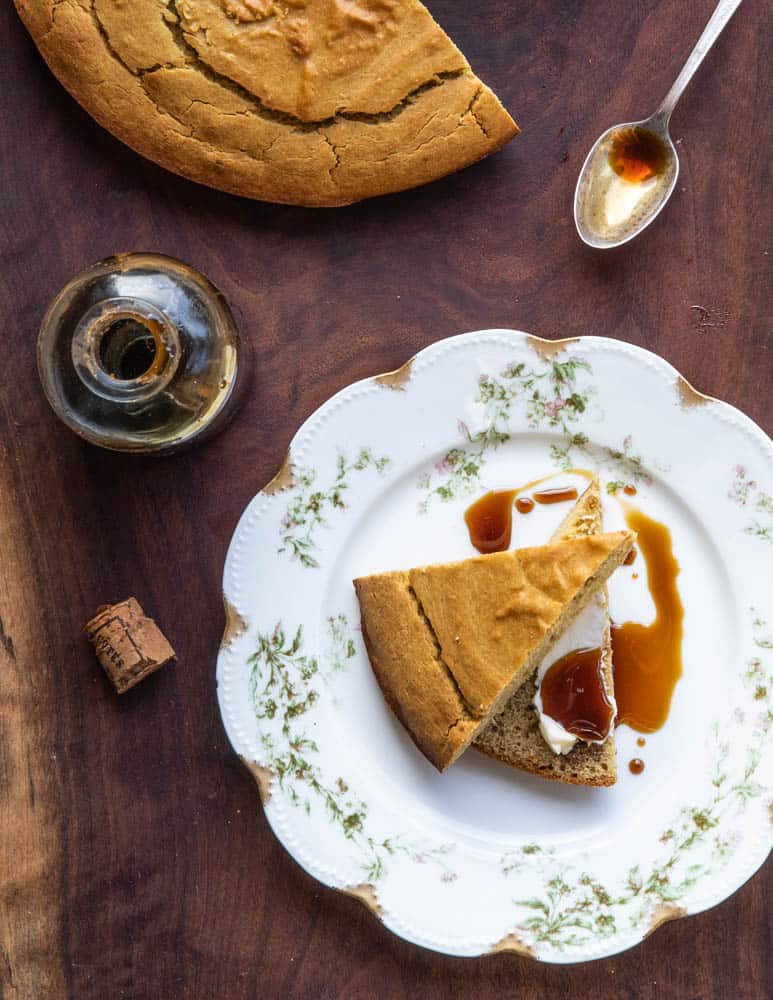
Most of the time, when people talk about cooking with pollen, they might think of pollen pancakes, and they can be good, as well as your other favorite quick bread recipes. Pollen bread has the benefit of a longer shelf life than pancakes though, and is something you can enjoy for a number of days, instead of blowing your pollen load in a single sitting.
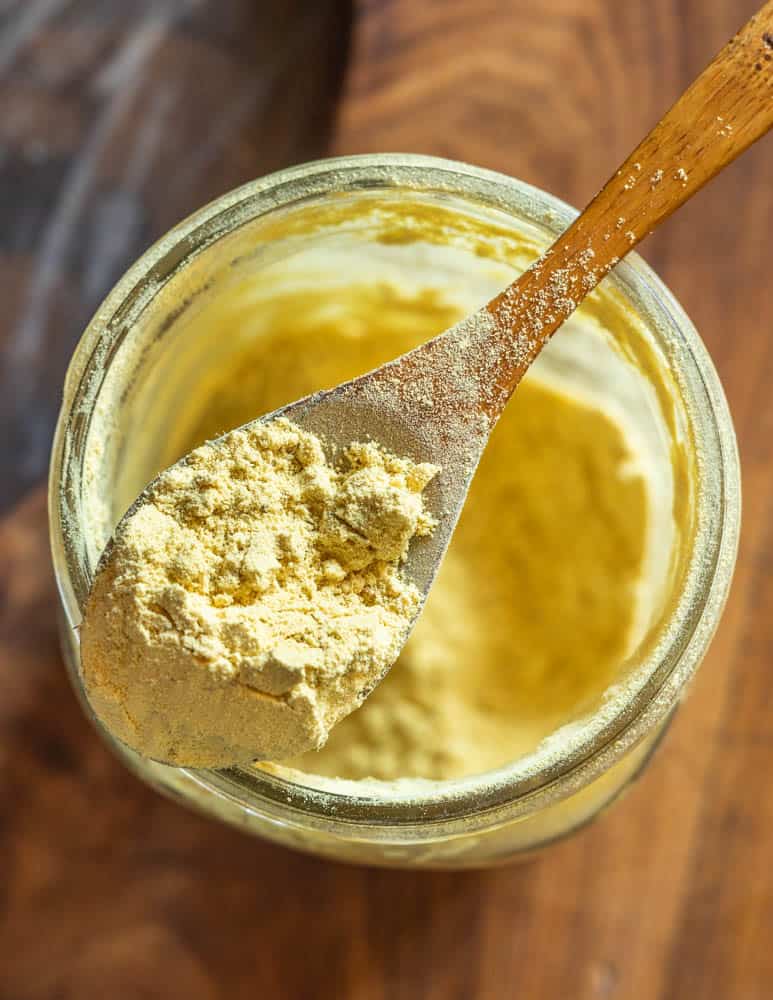
I've used both pine pollen and cattail pollen here, and the idea is one I came up with after reading about a sort of rustic bread made from mixing cattail pollen with water and steaming in leaves.
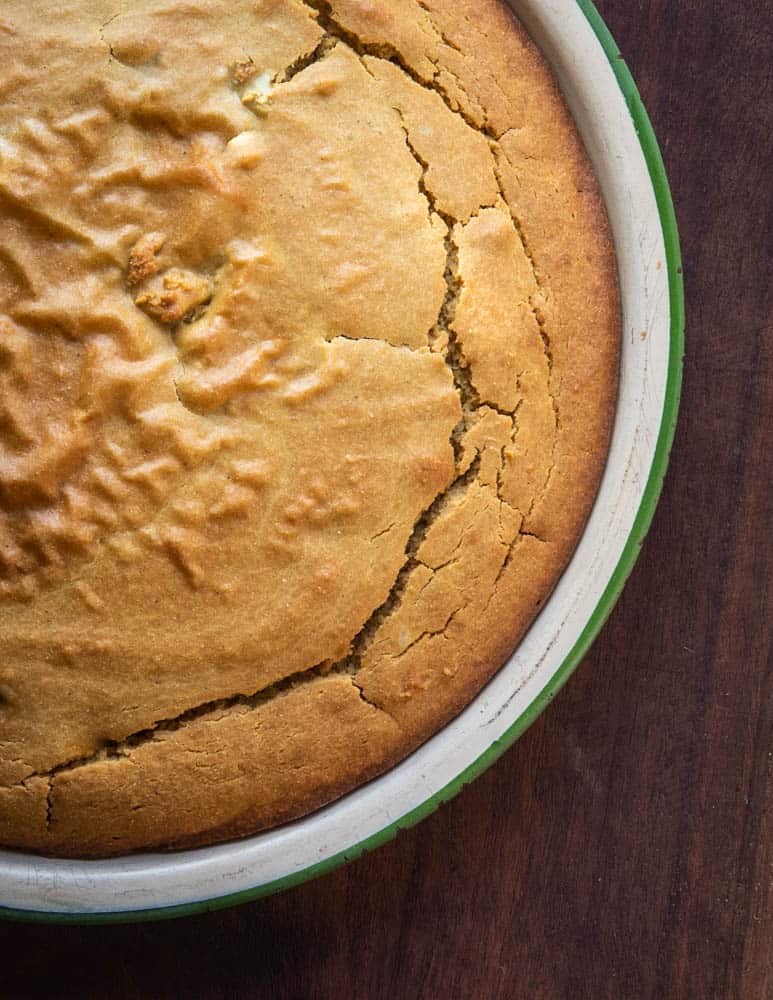
I've been cooking with pollen for a number of years now, so I know that just mixing pollen and water and steaming or baking it will give a product that is very dry and crumbly, not to mention expensive since pollen is generally very labor intensive to harvest. Plugging it into one of my favorite cornbread recipes was an easy fix.
The finished product will taste a bit like gently sweet cornbread, but it's a good learning recipe for understanding how pollen functions in baked goods. You'll notice a sort of fudgy texture and very subtle granular-ness that the pollen adds.
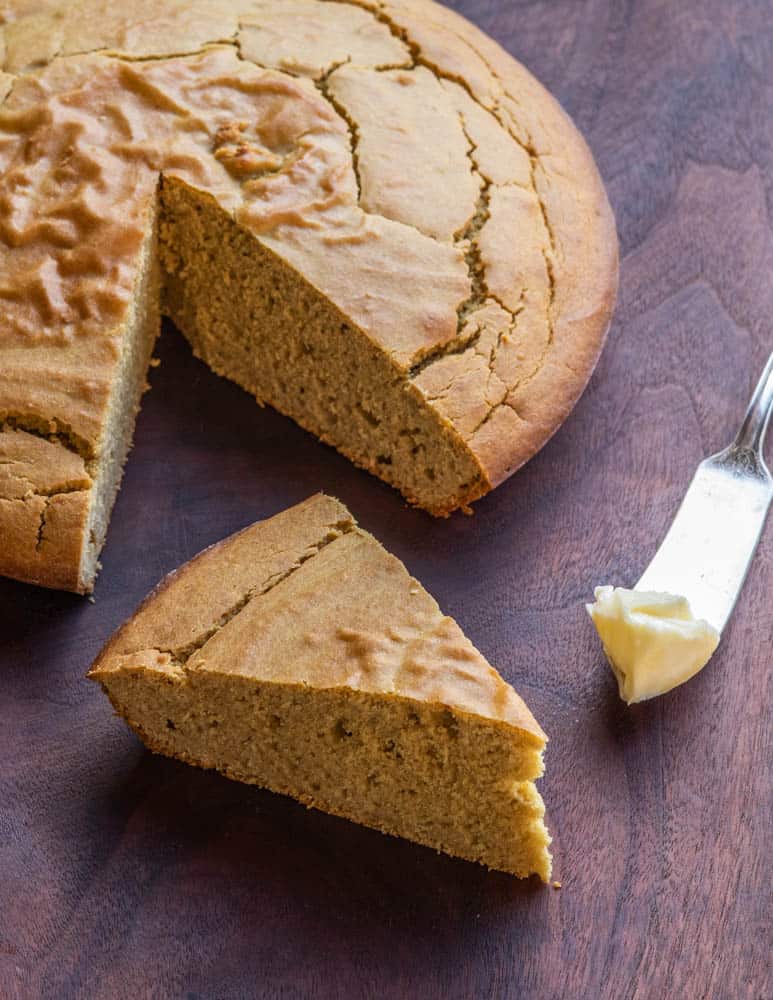
It's great served warm for breakfast or brunch slathered with butter and a drizzle of honey, but, for a real celebration of pine trees, try serving it with a drizzle of Mugolio/pine cone syrup.
25% pollen rule for baked goods
My pollen bread here is also a good example for you to extrapolate from regarding how much pollen you should put in any baked good as a starting guideline. Lots of recipes online using pollen as an ingredient (mostly pancakes) use a stingy amount of pollen.
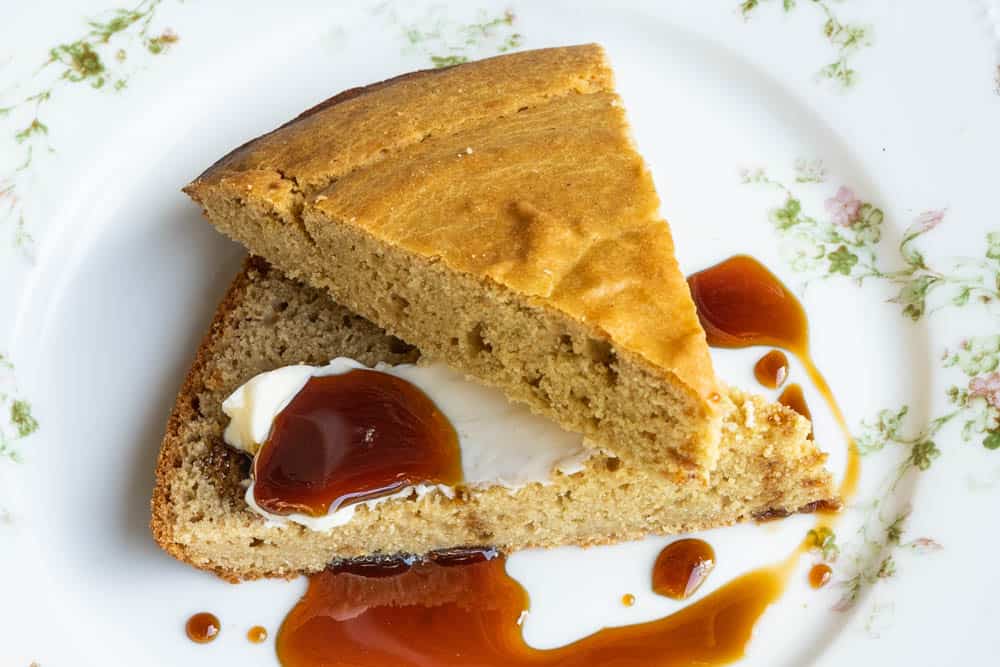
To be frank, tossing a tablespoon or two of pollen into your pancake batter might be cute, and make for a good YouTube video for the hipster audience, but the finished product will be a waste of pollen in my mind.
To actually enjoy and understand the culinary characteristics of pine and cattail pollen, I highly recommend starting out using no less than 25% of the total volume of flour in your recipes.
That being said, understand too that I am not substituting pine pollen in a 1:1 ratio for flour. Since pollen doesn't absorb water in the same way as flour, I add it, more or less to the batter without changing the recipe too much. In this recipe, I've exchanged ¼ cup of cornmeal for ½ cup pine pollen, since cornmeal also doesn't absorb water in the same way as all purpose flour will.
Pollen Bread
Equipment
- 1 9 inch baking pan or 8-9 inch cast iron skillet
Ingredients
Dry
- 1 cup all purpose flour
- ¾ cup cornmeal
- ½ cup pollen
- 2 teaspoon baking powder
- ¼ teaspoon baking soda
Wet
- ½ cup oil
- ¼ cup honey
- 1 egg
- 1 cup buttermilk
- ¾ teaspoon salt
- A few scrapes of lemon zest roughly half a lemon
Instructions
- Mix the dry ingredients (sift them if you can). In a separate container, whisk the wet ingredients.
- Mix the wet ingredients into the dry, then put into an 8 inch cake pan or cast iron skillet and bake at 350 for 25-30 minutes, or until just set.
- Allow the bread to cool for 15 minutes before cutting.
- Serve the bread with soft salted butter and your favorite syrup for drizzling. I love pine syrup with this, but maple syrup or honey are good too.
- Wrap the bread in clingfilm or put it into a container with a lid. Kept in the fridge, it will keep for a few days and can be reheated in an oven or a microwave.
Notes
Nutrition
More
Foraging and Cooking with Pine Pollen

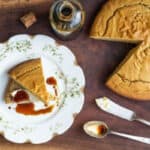
Leave a Reply